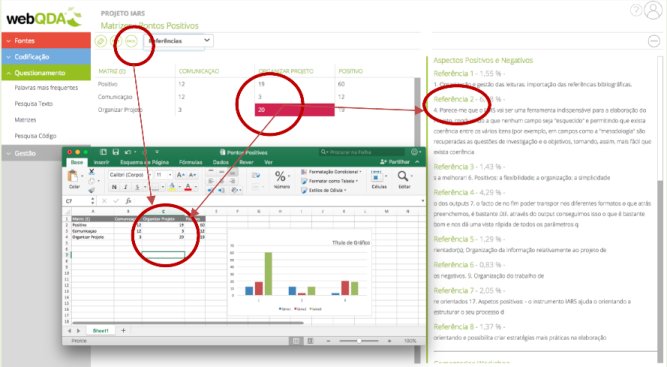
By Francislê Neri de Souza, University of Aveiro – Portugal
Qualitative Research is guided by different methodologies, techniques and tools. When we study these differences, we want to reinforce the specificity, efficiency and effectiveness of the methodological design in relation to the research objectives and questions that we want to answer.
These grounds remind us that the methodology has, despite its limitations, a definitive role in distinguishing the conclusions of science from mere speculation or daily superstition. When we discuss qualitative research versus quantitative research in education and in the other human and social sciences, we usually point out the differences of these two research approaches with the laudable aim of establishing limitations and applications of each one of them. Are we not forgetting to reflect on the similarities? Were not these similarities that would integrate the different approaches and paradigms as scientific tools?
Only to recall some of the main differences between both methodological approaches, in the epistemological, axiological, ontological dimensions, etc. we list some keywords. While in quantitative research we have: the numbers, the researcher’s point of view, the distant researcher, the test of theories, statistics, generalisation, accurate and reliable data, macro, behaviours, artificial conjunctures, etc. in qualitative research we have, respectively, the words, the point of view of the participants, the close investigator, the theories that emerge, the process, the understanding of the context, the rich and deep data, the micro, the meanings, the natural conjuncture, etc.
While it is important to establish the differences and peculiarities of each, we would like to briefly focus on the issue of similarities. If they exist, and what are they? For Bryman (2012) the similarities between qualitative and quantitative research can be summarised in nine items. Both:
i) are concerned about data reduction;
ii) want to respond to research questions;
iii) seek to relate data analysis to research already published;
iv) are concerned with the variation;
v) treat frequencies as a springboard for analysis;
vi) seek to ensure that deliberate distortions do not occur;
vii) argue for the importance of transparency;
viii) address the issue of error;
ix) are concerned that research methodologies should be appropriate to research questions.
In addition to the list of this author we could add that in both approaches the researchers are looking for: i) syntheses and patterns; ii) systematisation of the analysis of the data; iii) thoroughness of the conclusions; and iv) relevant application and reflection on the implications in the specific areas of science, technology and society. Looking at both lists we recognise the standards of science itself, to which we should add that both methodological approaches are concerned with ethical and citizenship issues.
If both methodologies are concerned with so many points in common, what would make one inferior to the other? Of course there can be misapplication of methodological principles in both approaches, which turn them into a bad science regardless of whether it is quantitative or qualitative. However, it can not be said that one methodology is “less scientific” than the other if both are governed by several similar scientific parameters.
What the thesis of similarities seeks to defend is that both sciences follow different paths, but are concerned with the rigor, systematisation and “truths” proper to science. One advantage that qualitative research currently presents is the provision of software that facilitates and enhances the transition of non-numerical data to numerical data according to the researcher’s need and rationale. In the following figure (webQDA) we can see the possibility of cross-coding categories from text, counting of reference numbers, exporting to Excel® and transforming into graphs and / or statistical indexes. Note that the connection between numerical value and non-numerical (textual) content is never lost, and it is the researcher’s choice to choose the appropriate language in academic writing (Neri de Souza, Neri de Souza, & Moreira, 2016).

All this transition between the non-numeric and the numeric, even if descriptive or inferential statistics are used, does not transform qualitative research into quantitative or mixed, because this designation of the nature of research depends much more on the questions and design of research as a whole than only the final treatment and / or writing language of results.
Bibliographic references
Bryman, A. (2012). Social Research Methods (4th ed.). Oxford: Oxford University Press.
Neri de Souza, F., Neri de Souza, D., & Moreira, A. (2016). Diversidade de Contextos e Dados: Corpus Latente na Internet – Um Desafio para os Métodos Mistos. Internet Latent Corpus Journal, 6(1), 1–6.
*Learn more at:
revistas.ulusofona.pt/index.php/rleducacao/article/view/5674/3570





Leave a comment